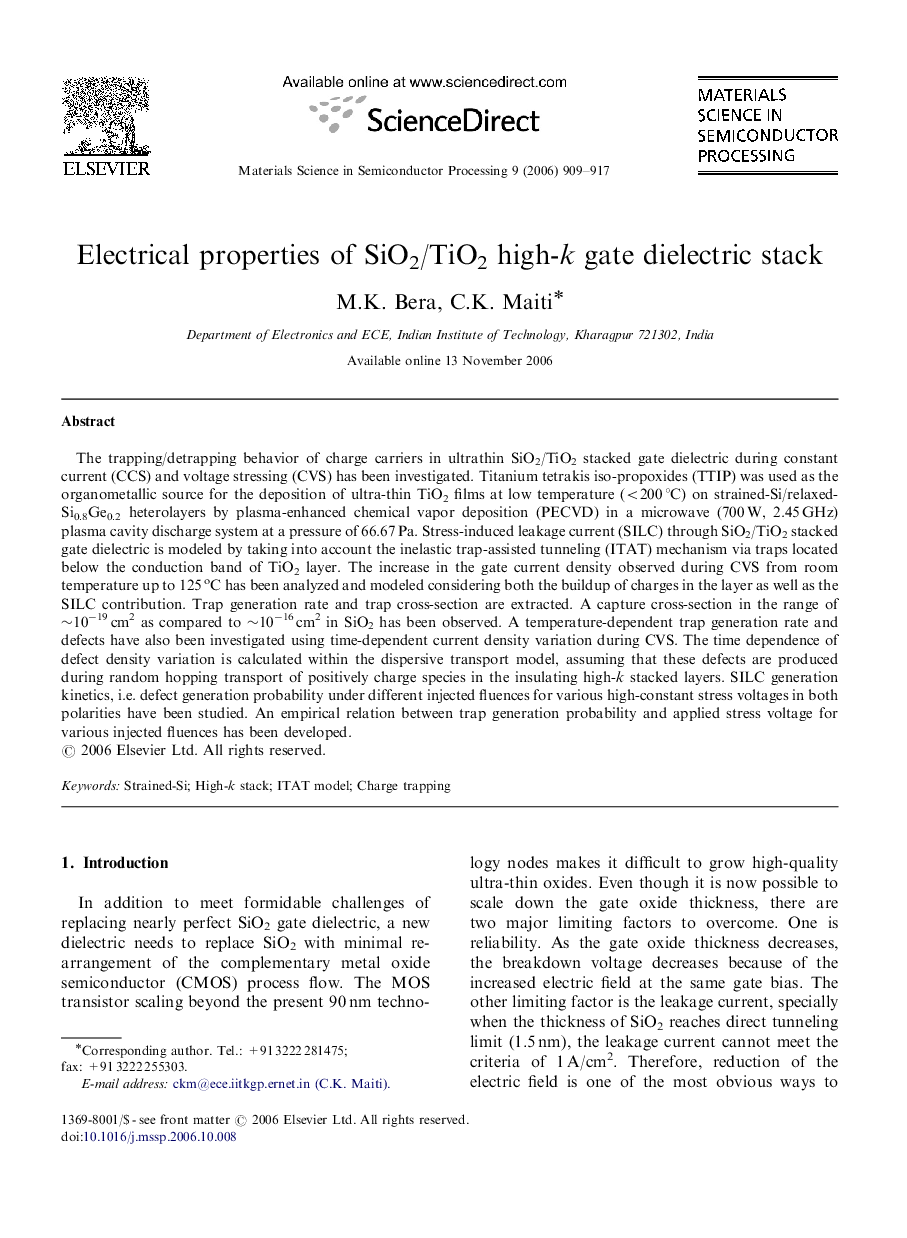| Article ID | Journal | Published Year | Pages | File Type |
|---|---|---|---|---|
| 729392 | Materials Science in Semiconductor Processing | 2006 | 9 Pages |
The trapping/detrapping behavior of charge carriers in ultrathin SiO2/TiO2 stacked gate dielectric during constant current (CCS) and voltage stressing (CVS) has been investigated. Titanium tetrakis iso-propoxides (TTIP) was used as the organometallic source for the deposition of ultra-thin TiO2 films at low temperature (<200 °C) on strained-Si/relaxed-Si0.8Ge0.2 heterolayers by plasma-enhanced chemical vapor deposition (PECVD) in a microwave (700 W, 2.45 GHz) plasma cavity discharge system at a pressure of 66.67 Pa. Stress-induced leakage current (SILC) through SiO2/TiO2 stacked gate dielectric is modeled by taking into account the inelastic trap-assisted tunneling (ITAT) mechanism via traps located below the conduction band of TiO2 layer. The increase in the gate current density observed during CVS from room temperature up to 125 oC has been analyzed and modeled considering both the buildup of charges in the layer as well as the SILC contribution. Trap generation rate and trap cross-section are extracted. A capture cross-section in the range of ∼10−19 cm2 as compared to ∼10−16 cm2 in SiO2 has been observed. A temperature-dependent trap generation rate and defects have also been investigated using time-dependent current density variation during CVS. The time dependence of defect density variation is calculated within the dispersive transport model, assuming that these defects are produced during random hopping transport of positively charge species in the insulating high-k stacked layers. SILC generation kinetics, i.e. defect generation probability under different injected fluences for various high-constant stress voltages in both polarities have been studied. An empirical relation between trap generation probability and applied stress voltage for various injected fluences has been developed.
